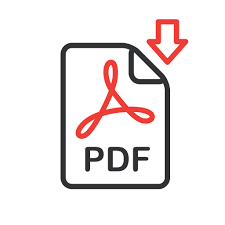The history of the mass media can be traced back to ancient cultures when dramas were performed as a form of media and broadcast to a wider audience. Nowadays we consider mass media to be diversified media technologies which attract their sympathizers by mass communication. Each form of mass media has its own types of content, its own creative artists and technicians, and its own business models. Broadcast media such as radio, fi lm, television, recordings (gramophone records, magnetic tapes, cassettes, cartridges, CDs, DVDs) transmit their information electronically.
Print media distribute information through newspapers, magazines, books, pamphlets or comics. Billboards and other signs placed inside and outside of commercial buildings, sports stadiums, shops and buses are called outdoor media. The digital media comprises both the Internet and mobile mass communication. The Internet media includes email, websites, blogs, and Internet-based radio and television. The word mass media refers to a medium which can communicate a message to a large group (e.g., cell phones with Internet access, video games, massive multiplayer online role-playing games). Cross-media means the idea of distributing the same message through different media channels in both print and wireless devices.
There are three types of broadcast media: Mass media focuses on global events and aims to reach a very large market such as the entire population of the country. Local media broadcasts to a much smaller population and area, and focuses on regional news. Speciality media is designed for specific demographics, such as specialty channels on TV (sports channels, music channels, etc.).
Print media: A book is a collection of sheets of paper with a piece of text written on them, bound together along one edge within covers.
It is also a literary work. A book produced in an electronic format is known as an e-book. A magazine is a periodical publication containing a variety of articles, generally financed by advertising and purchased by readers. Magazines are published weekly, biweekly, monthly, bimonthly or quarterly. They are often printed in colour and bound with a soft cover. Magazines fall into two broad categories: consumer magazines and business magazines. A newspaper is a publication containing news, information and advertising. It is usually printed on low-cost paper called newsprint. It may be published daily or weekly. However, paid circulation is declining in most countries and is shifting from print to online.
Outdoor media is a form of mass media which comprises billboards, signs, placards placed inside and outside of commercial buildings/objects like shops/buses, flying billboards (signs in the tow / v závese – v závěsu/ of airplanes), blimps /aerostat, balón/, and skywriting. This form of mass media is used by many commercial advertisers.
The Internet, a more interactive medium of mass media, is a worldwide, publicly accessible network, that can transmit any data. Interconnected computer networks can carry various types of information and services, such as email, online chat, file transfer, and the interlinked web pages and other documents of the World Wide Web. However, it is often difficult to determine the authenticity and reliability of information contained in web pages. The invention of the Internet has also allowed breaking news stories to go around the globe within minutes. The Internet is quickly becoming the centre of mass media. Everything is becoming accessible via the Internet.
Mass media can be used for advocacy (advertising, marketing, propaganda, public relations, and political communication), entertainment (performances of acting, music, sports, and TV shows along with light reading, video and computer games), public service announcements and emergency alerts (that can be used as a political device to communicate propaganda to the public).
Answer the questions:
What are the media?
What are the good and bad things about the media in your country?
Do you always believe the media? Give reasons.
How is today’s media different from that of 30 years ago?
Should there be any censorship of the media?
Do billboards blight the countryside and distract drivers?
What is “false news”?

